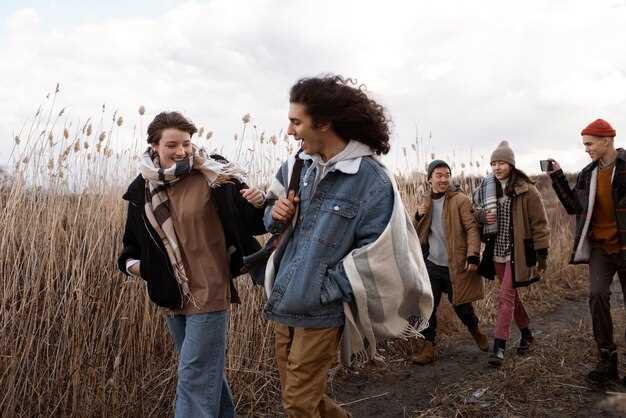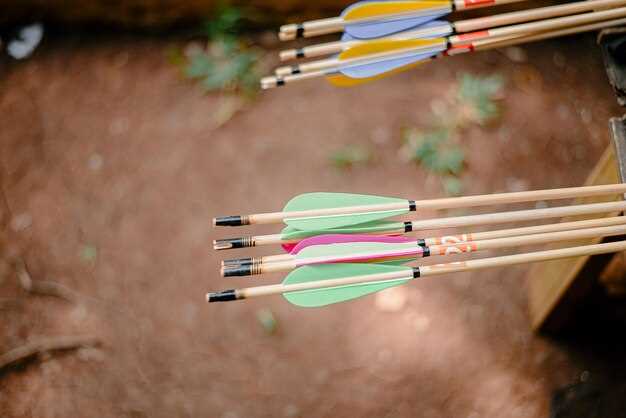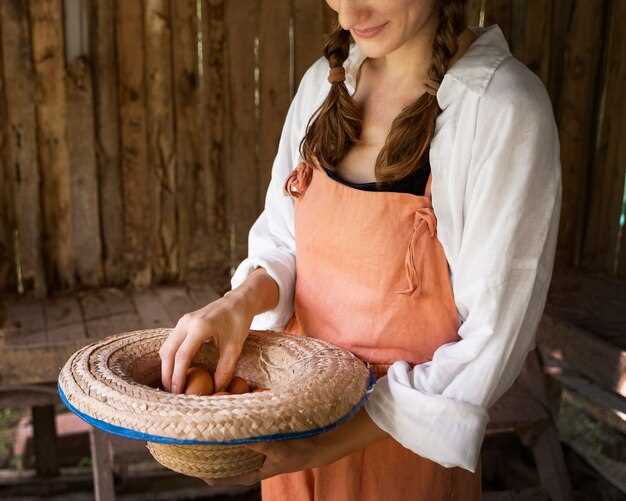Have you ever considered joining a historical reenactment group? Jump right into the heart of American history by participating with some of the most passionate reenactment communities across the United States. Historical reenactment offers a compelling way to connect with the past and meet like-minded people who share a love for history. Whether your interests lie in the romanticized age of the American Civil War or the rugged times of the Revolutionary War, there’s a group waiting for you.
Start by locating nearby reenactment groups in your state or region. The Civil War Reenactors Association is a great starting point, as it boasts numerous chapters nationwide, each focusing on different battles and periods within the Civil War era. They provide not only historical insights but also community events where new members are warmly welcomed. Don’t miss their annual meetups featuring grand-scale reenactments that bring history to life on an epic level.
If your interests are more aligned with the 18th century, consider the National Revolutionary War Association. This group offers an immersive experience, representing various facets of life during the American Revolution. From military encampments to colonial marketplaces, members don authentic uniforms and costumes, creating a detailed portrayal of the era. With workshops and seminars, they expertly guide newcomers in perfecting their historical attire and understanding the nuances of the period.
Joining a reenactment group is more than just a hobby; it’s an adventure through history where you’ll forge lasting friendships while gaining a deeper understanding of America’s past. The welcoming communities and dedicated members promise an enriching experience you won’t want to miss. So, find a local group that aligns with your historical interests and make a unique contribution to living history.
Exploring Prominent Historical Reenactment Groups
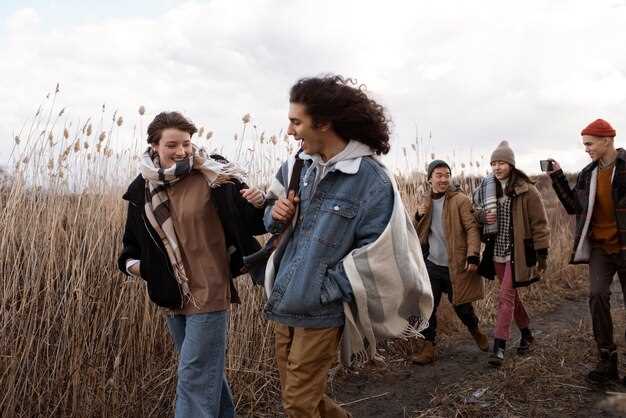
Consider becoming a member of The Civil War Trust if you’re interested in deep-diving into Civil War history. This organization not only organizes reenactments but actively works to preserve significant battlefields. Their events are meticulously researched, providing participants with an authentic experience that includes battle reenactments, living history camps, and educational programs.
If the American Revolution piques your interest, the Brigade of the American Revolution offers unparalleled opportunities to explore this pivotal period. Members adopt roles of soldiers and civilians, practicing authentic 18th-century crafts and military drills. With events from coast to coast, this group seeks to bring Revolutionary War history to life through immersive reenactments.
For those captivated by the medieval era, Regia Anglorum in North America recreates the Early Middle Ages, with a focus on Anglo-Saxon, Viking, and Norman periods. This group emphasizes historical accuracy in costumes and activities, allowing members to explore everything from traditional crafts to combat scenarios, providing a truly immersive medieval experience.
World War II enthusiasts might find the Historical Reenactment Society an ideal fit. With a comprehensive portrayal of various WWII groups, this society organizes events that range from battles to educational displays. Members have the chance to represent both Axis and Allied forces, offering a balanced view of the war’s history.
Joining any of these groups fosters a deep connection with the past, facilitates the honing of new skills, and creates camaraderie among like-minded history enthusiasts. Enlist today to step into a bygone era and keep history alive for future generations.
What Makes a Reenactment Group Stand Out?
Specialize! Focus on a specific era or event and delve into the finest details. This level of focus not only enriches participants’ knowledge but captivates audiences. Authenticity is key, so ensure uniforms, weapons, and artifacts are historically accurate. Collaborate with historians and museums to maintain precision and credibility.
- Engagement and Interactivity: Involve visitors in activities such as drills or crafts. This interaction fosters a deeper connection and understanding of the historical period.
- High-quality Performances: Regularly train and practice to ensure performances are polished and compelling.
- Storytelling: Develop captivating narratives that weave personal stories into historical contexts, offering fresh perspectives on well-known events.
- Educational Outreach: Offer workshops and lectures, enhancing the educational aspect of reenactments and appealing to schools and community groups.
- Community Involvement: Partner with local businesses and community organizations to generate support and expand your audience.
- Online Presence: Use social media to share behind-the-scenes content, updates, and educational materials, increasing exposure and drawing in new members.
By focusing on these elements, reenactment groups not only enhance their authenticity but also create memorable experiences that both educate and entertain audiences.
Top Civil War Reenactment Groups in the US
For anyone keen on authentically exploring Civil War history, joining The 2nd South Carolina String Band offers an enriching experience. Known for embodying the spirit of Confederate soldiers, this group focuses on historical musical performances, providing an audible glimpse into the past.
Another renowned group, The Liberty Rifles, dedicates itself to exacting portrayals of Union soldiers. This group invests heavily in accurately replicating historical battles, with members donning period-correct uniforms and gear, ensuring that participants step directly into 19th-century America.
If you prefer a blend of both North and South perspectives, consider The 10th Illinois Volunteer Infantry. Enthusiasts from all backgrounds contribute to this reenactment, which includes comprehensive training sessions and public demonstrations. Their dedication to educational outreach ensures that each reenactment informs as well as entertains.
For those interested in a more immersive lifestyle, The Southern Skirmish Association offers what could be considered full-time reenactment. They host multiple events nationwide, allowing members to fully engage with the lifestyle and camaraderie of Civil War-era Americans. Their focus on both battle reenactments and civilian life presentations fosters a well-rounded historical experience.
Renowned Revolutionary War Reenactment Societies
To experience the American Revolutionary War period firsthand, joining a well-established reenactment group is an excellent choice. Among the leading societies, the Brigade of the American Revolution stands out. This organization, active since the 1960s, focuses on authentic portrayals, educational programs, and preserving historical accuracy in their events across the United States and Canada.
Another reputable group is the Continental Line, a coalition of units dedicated to reenacting the life of soldiers and civilians from the revolution. They host numerous events, providing an immersive experience for members by emphasizing research and careful attention to detail in their uniforms and reenactments.
The British Brigade offers another perspective, representing British forces and their allies. This group attracts those interested in exploring the experiences of the opposition, ensuring a balanced and well-rounded understanding of the period through regular events and workshops.
Consider these societies not only for their educational value but also for the community they provide. Participation helps build connections with fellow enthusiasts passionate about reliving and preserving history. Below is a comparative table for your convenience:
| Society | Focus | Founded | Highlights |
|---|---|---|---|
| Brigade of the American Revolution | Authentic portrayals of American forces | 1960s | Educational programs, historical accuracy |
| The Continental Line | American soldiers and civilians | 1980s | Research-focused, detailed reenactments |
| The British Brigade | British forces and allies | 1980s | Balanced historical perspective, workshops |
Popular Medieval Living History Organizations
Explore the opportunity to join the Society for Creative Anachronism (SCA), a vast community dedicated to the exploration and re-creation of pre-17th-century European history. Offering a wide range of activities from historical combat to artisanal crafts, the SCA encourages enthusiasts to deepen their understanding by participating in events across the US and beyond. Members create personas that align with historical periods and regions, adding a personal touch to their reenactment experience.
Another renowned organization, Regia Anglorum, focuses on the recreation of the early medieval period in England, spanning from the arrival of the Anglo-Saxons to the Norman Conquest. This group stands out due to its commitment to authenticity and educational outreach, frequently collaborating with museums for public displays and reenactments that bring history to life.
For those interested in a more combat-focused experience, the Adrian Empire emphasizes historical fighting techniques and armored combat. The organization is structured into kingdoms and duchies, each hosting regular events that allow members to participate in tournaments, feasts, and craft workshops, all rooted in historical accuracy.
The Markland Medieval Mercenary Militia offers a unique perspective by blending military history with cultural aspects of the medieval period. Frequently hosting events on the East Coast, this group is ideal for those wishing to experience a multifaceted approach to medieval living history through immersive battles and dynamic social gatherings.
By joining one of these organizations, you will not only gain access to a wealth of historical knowledge and resources but also become part of a community passionate about preserving and experiencing the nuances of medieval life.
Key Characteristics of Successful Reenactment Communities
Develop a strong foundation of historical accuracy by investing time in research. Reliable sources and authentic materials elevate the quality of reenactments, engaging both participants and spectators. Creating committees focused on different aspects such as costumes, weaponry, and scenarios can ensure consistency and depth in portrayals.
Cultivate an inclusive environment by welcoming diverse members, regardless of experience level. Encourage mentorship, where seasoned members guide newcomers, facilitating knowledge transfer and fostering a sense of belonging. This approach not only enhances skill but also strengthens community bonds.
Prioritize clear communication to coordinate activities smoothly. Utilize various platforms like newsletters, forums, and social media to keep members informed and involved. Scheduling regular meetings and events builds anticipation and maintains momentum within the group.
Engage with local communities by organizing public demonstrations, workshops, and educational programs. These activities raise awareness, attract new members, and deepen public appreciation for historical reenactments. Building partnerships with schools and cultural institutions can also expand outreach efforts.
Encourage feedback and adaptability to keep the community dynamic and responsive. Regularly gather input from participants to enhance processes and experiences, ensuring continued relevance and engagement. Celebrating successes and acknowledging contributions boosts morale and inspires ongoing participation.
The Process of Joining a Historical Reenactment Group
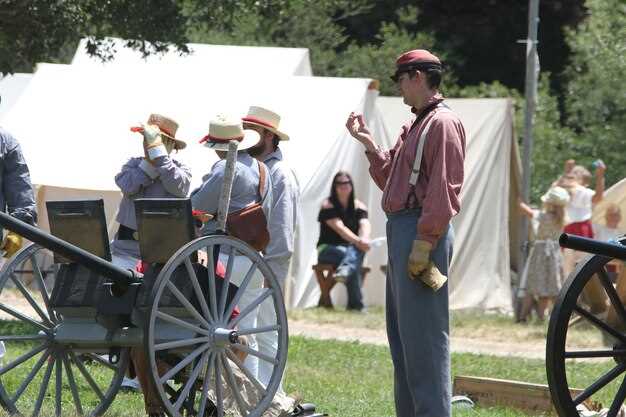
Research local reenactment groups that align with your historical interest. Begin by visiting local events, exploring online forums, and following social media pages of prominent groups. This will provide insights into their focus periods, required commitments, and the community atmosphere.
Contact the group’s leadership or membership coordinator to express your interest. Introduce yourself, mention your enthusiasm for history, and inquire about upcoming meetings or events you could attend. Personal interaction is often more effective than digital outreach alone.
Attend a meeting or event as an observer. Most groups appreciate potential members seeking to understand their activities and are keen to share detailed information about their reenactments and expectations. Pay attention to the group’s dynamics and ensure it matches your preferences.
Show enthusiasm and willingness to learn. Successful reenactments rely on dedicated participants committed to authenticity and teamwork. Express interest in their educational offerings, workshops, or training sessions to deepen your knowledge of the historical era they represent.
Complete any necessary membership paperwork and pay fees if required. Inform yourself about their bylaws, codes of conduct, and any commitments expected regarding participation in events or meetings. Clear understanding of these aspects ensures smooth integration into the community.
Engage actively by volunteering, assisting with preparations, and attending regular gatherings. This fosters relationships with other reenactors and enhances your skills. Over time, you may take on more significant roles or responsibilities within the group, allowing you to contribute more substantially to events and reenactments.
Remember, joining a reenactment group is not merely about participation in events but becoming part of a community that shares your passion for history and storytelling. Embrace the experience wholeheartedly, and you’ll gain both knowledge and lifelong friendships.
Steps to Find the Right Group for You
Research local reenactment events and visit them in person. This will give you a chance to observe different groups, their interactions, and the historical periods they portray. Take note of group sizes, gear quality, and the authenticity of the presentations.
Identify your area of interest. Whether it’s the Civil War, Revolutionary War, or Medieval Times, knowing your preference will narrow down your choices significantly. Look for groups that specialize in your favorite era or battle.
Join online forums and social media groups. Many reenactment communities have a strong presence online, offering a wealth of information and personal experiences which can guide you in your decision. Ask members about their experiences and seek recommendations.
Contact group leaders directly via email or phone. A direct conversation can provide insights into the group’s activities, practices, and expectations from new members. Don’t hesitate to ask questions regarding time commitments and any fees involved.
Attend a trial event or meeting if possible. Many groups are open to prospective members joining a few gatherings before committing. This experience can help you gauge the group’s dynamics, culture, and whether it aligns with your interests.
Evaluate logistics such as location, meeting frequency, and cost. Ensure that the group’s logistics are feasible for your lifestyle. This consideration will prevent future inconveniences and ensure a fulfilling reenactment experience.
Reflect on personal goals for joining a reenactment group. Whether it’s learning about history, improving public speaking skills, or meeting like-minded individuals, understanding what you hope to gain will help in aligning with the right group.
Understanding the Role of Membership Dues
Consider the importance of membership dues as a vital element for historical reenactment groups. They not only cover basic operational expenses but also fuel the community’s growth and engagement. Here’s how they work effectively:
- Funding Events: Dues often play a crucial role in renting venue spaces, securing necessary permits, and providing essential infrastructure for events. This ensures a seamless experience for participants and audiences alike.
- Maintaining Authenticity: Fees contribute to acquiring high-quality materials and creating authentically accurate costumes and props. This commitment to historical detail elevates the overall authenticity of reenactments.
- Training and Workshops: A portion of the dues often goes towards organizing training sessions and educational workshops. These opportunities enrich the knowledge and skills of the members and enhance their ability to portray historical figures accurately.
- Community Building: Dues support community-building activities such as social events, networking opportunities, and regular meetings, fostering a sense of unity and camaraderie among members.
- Insurance and Safety: Safety is paramount, and membership fees often cover insurance costs to protect both members and the public during events, ensuring peace of mind for everyone involved.
Joining a historical reenactment group means not only enjoying the thrill of stepping back in time but also contributing to its sustainability and growth. By understanding the role of membership dues, you empower both your experience and the community at large.
Engaging with the Community: Rules and Etiquette
Respect and authenticity are at the heart of historical reenactment communities. Always prioritize research to ensure that your portrayal is accurate and respectful to the people and culture you are representing. Engaging in conversations with historians and fellow reenactors can provide valuable insights and improve your interpretation.
Attend community meetings and workshops regularly. These are prime opportunities to learn from experienced members and to ask questions about best practices. Listening and being open to feedback can greatly enhance your skills and credibility within the group.
When participating in events, adhere strictly to the event’s guidelines and schedules. Arriving on time and prepared shows respect for the organizers and your fellow participants. Remember to maintain your character in public areas to preserve the authenticity of the experience for both the audience and other reenactors.
Respect your fellow reenactors’ space and belongings. Always ask before borrowing gear, and be willing to share information and resources openly. Fostering a supportive environment encourages the growth and enrichment of the community.
Safety should always be a top priority. Follow all safety guidelines, particularly when it comes to weaponry and pyrotechnics. Encouraging a safety-first mindset ensures a secure and enjoyable experience for everyone involved.
Video:
RED FLAGS of Reenacting (…and some green ones) – Ft. @HMthRegtofFootndBattLI
RED FLAGS of Reenacting (…and some green ones) – Ft. @HMthRegtofFootndBattLI
Q&A:
Which historical periods are most popular among reenactment groups in the US?
The most popular historical periods for reenactment groups in the US include the American Civil War, the Revolutionary War, and World War II. These periods attract a large number of participants and spectators due to their significant impact on American history and the wealth of available resources such as uniforms, weapons, and detailed historical records. Some groups also focus on less mainstream periods like the Viking era or the American Frontier, offering a unique perspective on lesser-known aspects of history.
How can someone become a member of a historical reenactment group?
To join a historical reenactment group, you typically need to attend an introductory meeting or event hosted by the group. Many groups have websites or social media pages where they post information about upcoming events and membership requirements. Prospective members usually need to demonstrate an interest in history and a willingness to participate in events in historically accurate costumes and settings. Some groups may also require a membership fee to cover costs associated with events, seminars, and materials.
Are there any specific skills or knowledge required to participate in reenactments?
While no specific skills are strictly required to start participating in reenactments, having a background in history, sewing, or stage acting can be helpful. Many groups provide training sessions or workshops to help members acquire necessary skills such as using period-specific tools, understanding historical context, or learning stage combat techniques. It is also beneficial to have a willingness to research and learn about the specific period you are interested in reenacting to ensure authenticity.
What are the benefits of joining a historical reenactment group?
Joining a historical reenactment group provides several benefits, including the opportunity to learn about history in a hands-on manner, meet people with similar interests, and improve skills such as teamwork, public speaking, and costume design. Reenacting also allows participants to engage in educational activities, often helping to bring history to life for audiences, including students and community groups. Additionally, many reenactors find personal satisfaction in preserving and sharing historical knowledge while experiencing an immersive reflection of the past.
Is it expensive to participate in historical reenactments?
The cost of participating in historical reenactments varies widely depending on the era and the level of authenticity a participant wishes to achieve. Basic costumes and equipment can often be purchased second-hand or homemade to keep costs down, but more elaborate or custom gear can be quite expensive. Membership fees, travel expenses to events, and maintenance of equipment and costumes can also add to the cost. However, many reenactors see these expenses as worthwhile investments in a fulfilling and educational hobby.
How can someone join a historical reenactment group in the US?
Joining a historical reenactment group typically involves researching local groups that match your historical interest. Many groups have websites or social media pages where they post contact information and meeting events. Once you’ve found a group, attend an event or meeting to observe and get to know the members. Express your interest in joining, and they will guide you on the next steps. Participation may require some investment in costumes and learning historical practices, but most groups are welcoming to newcomers and will assist you in getting started.
What are the main historical periods represented by reenactment groups in the US?
In the US, historical reenactment groups often focus on significant periods such as the American Civil War, Revolutionary War, and World War II. You may also find groups dedicated to the medieval period, the Vietnam War, and the Old West. Each group provides a unique way to explore and understand different aspects of history through immersive experiences.
